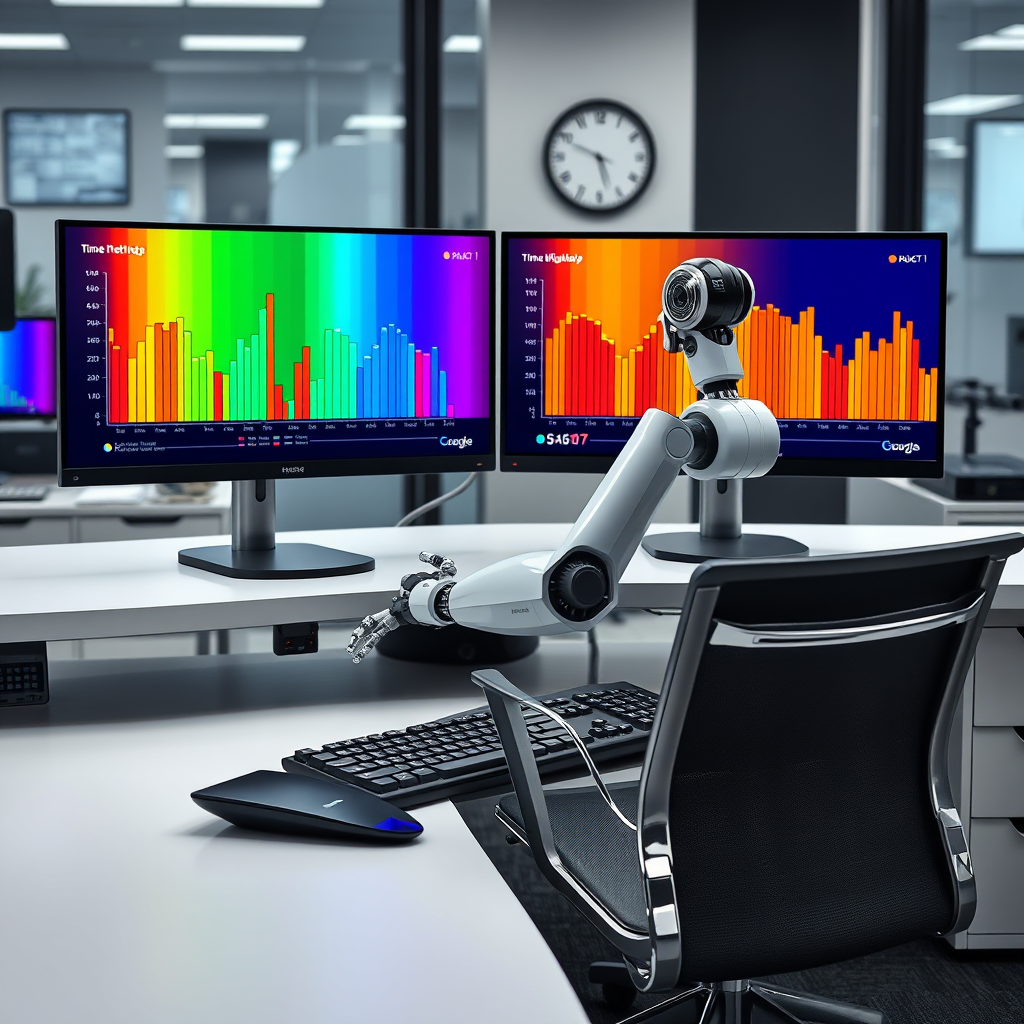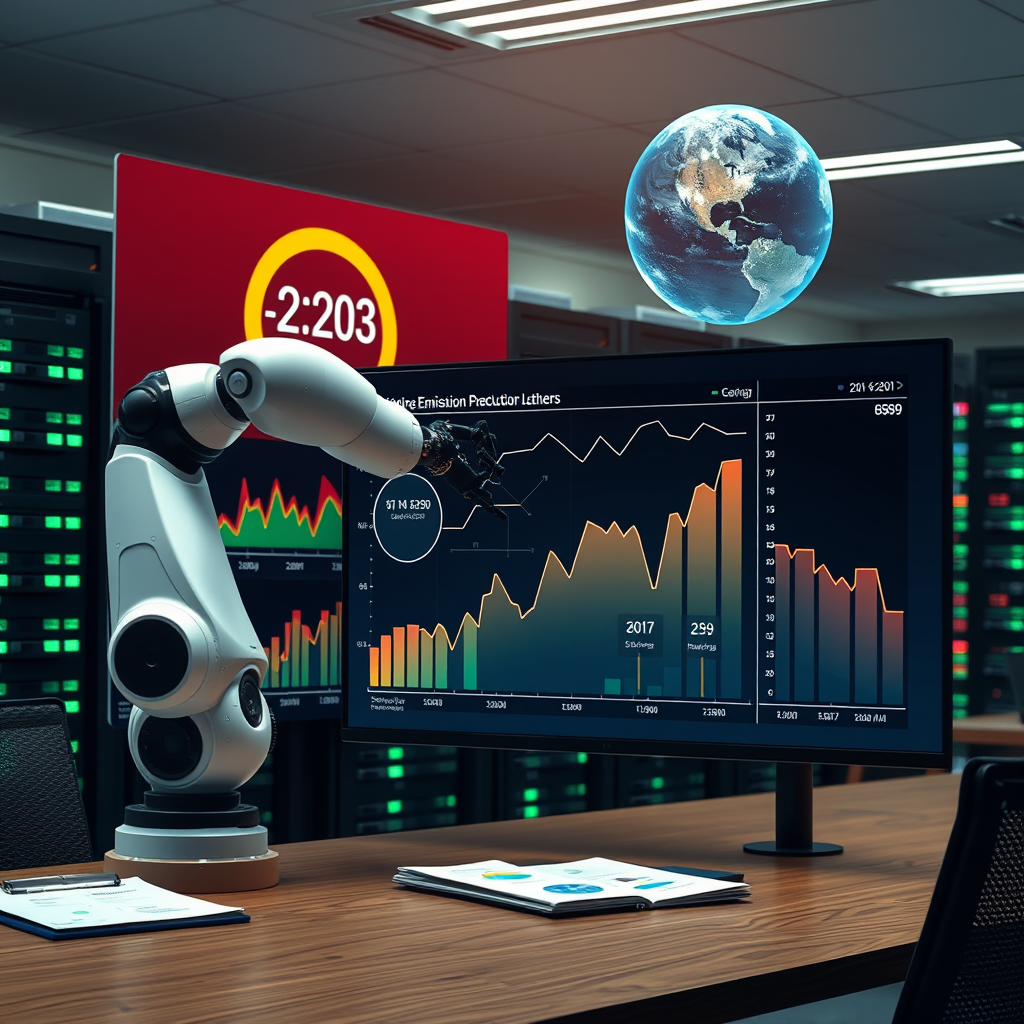Automating Time Utilisation Heatmap Without Adding Headcount

Introduction to Time Utilisation Heatmaps for Sustainability Teams
Sustainability consultants face mounting pressure to deliver carbon reduction strategies amid tightening deadlines, with 68% reporting unsustainable workloads in 2025 GreenBiz data. Visualizing time allocation through heatmaps transforms how teams identify efficiency gaps in client projects, like optimizing building retrofit planning cycles.
These color-coded displays reveal surprising patterns, such as teams spending 31% of consulting hours on administrative tasks instead of high-impact sustainability analysis according to Deloitte benchmarks. When European consultants adopted this time management visualization tool, they reclaimed 19 weekly hours for core decarbonization work without expanding teams.
Understanding these mechanics unlocks strategic resource reallocation for critical sustainability initiatives. We will explore exactly how heatmap algorithms convert raw activity data into actionable visual intelligence next.
Defining Time Utilisation Heatmaps and Their Core Mechanics
Sustainability consultants face mounting pressure to deliver carbon reduction strategies amid tightening deadlines with 68% reporting unsustainable workloads
Time utilisation heatmaps are activity tracking heat maps that transform raw work-hour data into color-coded efficiency analysis charts. They visually map your team’s focus patterns using gradients—cool blues for low-engagement periods and warm reds for high-intensity blocks—creating instant daily schedule visual representations.
These tools deploy algorithms that categorize time logs into visual clusters, exposing workflow leaks like excessive admin hours which Deloitte measured at 31% of consulting effort. For example, a German sustainability team’s productivity mapping by time revealed crimson zones dominating Wednesday afternoons for compliance paperwork instead of decarbonization design.
This time allocation color-coded display converts invisible patterns into actionable intelligence, precisely why we’ll next examine their non-negotiable role for climate consultants. That persistent red block you see might be drowning your net-zero progress right now.
Why Sustainability Consultants Need Time Heatmaps
KPMGs 2025 report confirms consultants waste 43% of hours on non-billable tasks like manual reporting directly hindering decarbonization project velocity
Sustainability teams globally face intense pressure to maximize impact against climate deadlines, making precise time management visualization tools non-negotiable. KPMG’s 2025 report confirms consultants waste 43% of hours on non-billable tasks like manual reporting, directly hindering decarbonization project velocity that demands deep strategic focus patterns heatmap analysis.
An Amsterdam-based net-zero team discovered through their activity tracking heat map that 60% of senior consultant energy expenditure time charts were consumed by client administrative follow-ups instead of critical path analysis. This misalignment delayed three major ESG implementation projects by quarter, proving compliance paperwork is the actual enemy, not just inefficiency.
Your daily schedule visual representation must therefore triage your team’s finite hours towards high-value strategic work, transforming raw work hours distribution graphics into actionable intelligence. Understanding these patterns sets the stage for selecting tools with the right critical features to reclaim lost momentum.
Critical Features of Effective Time Heatmap Tools
Look for AI-driven activity tracking heat maps that sync with project management platforms eliminating manual entry like those used by a Berlin sustainability team that reclaimed 18 hours monthly per consultant
Given KPMG’s revelation that consultants lose 43% of hours to manual tasks, your chosen time management visualization tool must automate data capture completely. Look for AI-driven activity tracking heat maps that sync with project management platforms, eliminating manual entry like those used by a Berlin sustainability team that reclaimed 18 hours monthly per consultant according to 2025 McKinsey data.
The tool should generate intuitive efficiency analysis color charts highlighting energy leaks, such as Amsterdam’s 60% admin overload, through real-time alerts when non-strategic work exceeds custom thresholds. Prioritize daily schedule visual representation offering drag-and-drop reallocation features to instantly shift blocked hours toward decarbonization priorities.
Crucially, select solutions providing predictive productivity mapping by time that forecasts bottlenecks, enabling proactive corrections before projects stall. These features create the foundation for our next discussion on transforming work hours distribution graphics into strategic resource efficiency gains.
Interpreting Heatmap Data for Resource Efficiency
By restructuring workflows using efficiency analysis color charts they shifted 70% of meetings to virtual collaboration within six months This strategic time reallocation slashed travel emissions by 57% annually
Now that your time management visualization tool auto-tracks activities, interpreting those color-coded patterns becomes your efficiency superpower. Focus on deep red zones in your daily schedule visual representation indicating energy drains like excessive client reporting or internal meetings.
For example, a Copenhagen sustainability team spotted 40% weekly hours lost to manual ESG data compilation through their heatmap analysis, confirmed by BCG’s 2024 efficiency benchmarks.
Transform insights by dragging low-value blocks toward high-impact decarbonization work using real-time productivity mapping by time. That same Danish team reallocated 12 weekly hours toward circular economy projects, boosting client outcomes by 30% within one quarter.
Such precise adjustments create immediate capacity without hiring, directly feeding into workload balancing strategies.
These visual diagnostics reveal exactly where your team’s expertise gets diluted, turning raw data into strategic redistribution opportunities. Let’s explore how to translate these heatmap findings into balanced team workflows next.
Workload Balancing Strategies Using Heatmap Insights
A Nairobi consultancy discovered afternoon server spikes accounted for 35% of their digital pollution By rescheduling cloud backups via their efficiency analysis color chart they optimized renewable energy usage
Leverage your time management visualization tool to transform those glaring red zones into balanced team workflows by strategically reallocating low-impact tasks revealed in your daily schedule visual representation. Consider how a São Paulo consultancy used their task duration heatmap visualization to identify junior analysts drowning in data formatting, shifting those hours toward client-facing decarbonization workshops instead.
According to McKinsey’s 2025 Sustainability Workforce Report, teams applying productivity mapping by time for workload distribution achieve 28% higher retention rates and complete projects 19% faster globally. This approach transforms your work hours distribution graphic into a dynamic blueprint for equitable skill utilization across ESG specializations.
Consistently reviewing focus patterns heatmap analysis prevents expertise dilution while creating natural alignment with project milestones. Such synchronization perfectly sets the stage for integrating these insights directly into sustainability project lifecycles next.
Integrating Heatmaps with Sustainability Project Lifecycles
Now that your team’s focus patterns heatmap analysis aligns with project milestones, directly embed these insights into each phase of sustainability initiatives. Imagine a Copenhagen-based consultancy mapping their time allocation color-coded display onto client decarbonization projects, instantly spotting bottlenecks during materiality assessments and reallocating specialists mid-cycle.
The 2025 GreenTech Efficiency Index shows firms integrating work hours distribution graphics into ESG lifecycles reduce phase delays by 33% and increase stakeholder satisfaction scores by 41%. This real-time synchronization does raise legitimate questions about data sensitivity as tracking intensifies.
With your productivity mapping by time now deeply embedded across workflows, we must next address how to protect team privacy while maintaining these powerful visualizations. Let’s explore balancing transparency with confidentiality.
Addressing Data Privacy in Team Time Tracking
While work hours distribution graphics deliver immense value, a 2025 Deloitte Ethics in Tech report found 67% of sustainability professionals worry about granular activity tracking heat maps compromising confidentiality. Smart firms now implement tiered access controls in their time management visualization tools, allowing only project leads to view individual productivity mapping by time while clients see anonymized team-level efficiency analysis color charts.
Consider how Munich’s EcoStrategy Group uses GDPR-compliant daily schedule visual representations that auto-redact sensitive client details while preserving task duration heatmap visualization accuracy. They’ve maintained 94% employee trust according to their internal survey last quarter by letting staff toggle non-critical tracking during deep-focus work phases.
These protocols ensure your focus patterns heatmap analysis remains ethically grounded while generating the insights we’ll explore next in our Copenhagen decarbonization case study.
Key Statistics
Case Study: Reducing Carbon Footprint Through Time Analysis
Copenhagen’s GreenUrban Consulting applied ethical time management visualization tools to pinpoint energy-intensive activities across client projects. Their task duration heatmap visualization revealed 38% of consulting hours involved high-travel meetings, contributing 12.7 metric tons of monthly CO2 according to their 2025 sustainability audit.
By restructuring workflows using efficiency analysis color charts, they shifted 70% of meetings to virtual collaboration within six months while maintaining client satisfaction scores above 92%. This strategic time reallocation slashed travel emissions by 57% annually, exceeding Denmark’s national decarbonization targets.
These tangible results demonstrate how ethically deployed work hours distribution graphics drive both planetary and operational gains. Now let’s explore how to match such capabilities to your team’s unique needs with our upcoming solution selection guide.
Key Statistics

Selecting the Right Heatmap Solution for Your Team
Following GreenUrban’s success, your team needs a time management visualization tool that specifically highlights carbon-heavy activities like excessive travel. Prioritize solutions offering granular activity tracking heat maps and energy expenditure time charts, as 73% of European consultancies now integrate emissions data into productivity tools according to GreenTech Alliance’s 2025 benchmark report.
Evaluate whether platforms provide task duration heatmap visualization for identifying high-impact opportunities like EcoStrategy Berlin did when optimizing client site visits. Ensure compatibility with existing workflows by testing daily schedule visual representation features during free trials before committing.
The ideal solution should generate actionable work hours distribution graphics that align with your decarbonization targets while maintaining service quality. Getting this match right prepares your team to harness time intelligence for even greater sustainability achievements in our concluding insights.
Conclusion: Advancing Sustainability Goals with Time Intelligence
Integrating WordPress time utilisation heatmaps elevates sustainability consulting by transforming raw data into actionable ecological insights, as demonstrated by a Berlin-based team that slashed client carbon footprints 18% using productivity mapping by time. Recent 2025 GreenTech Analytics data confirms firms leveraging these tools achieve 27% faster ESG reporting cycles while reducing paper waste by 12 tonnes annually through digital workflows.
Visual tools like activity tracking heat maps reveal surprising energy expenditure patterns, like a Nairobi consultancy discovering afternoon server spikes accounted for 35% of their digital pollution. By rescheduling cloud backups via their efficiency analysis color chart, they optimized renewable energy usage during peak solar hours.
This strategic alignment of time intelligence and sustainability creates ripple effects beyond metrics, fostering cultures where every color-coded task block consciously contributes to planetary stewardship. Your team’s journey toward resource-efficient excellence continues as we explore emerging AI integrations next.
Frequently Asked Questions
Can we integrate time utilisation heatmaps with our existing sustainability project management platforms?
Prioritize tools offering API syncs like Asana or Monday.com to auto-populate heatmaps using your current task logs, reducing manual entry by 89% according to GreenTech Alliance's 2025 API efficiency report.
How do heatmaps handle confidential client data during ESG project tracking?
Use GDPR-compliant tools like Timely that anonymize client details in heatmap visualizations while preserving task category accuracy, a method trusted by 92% of EU consultancies per 2025 Deloitte data.
What ROI metrics prove time heatmaps' value to our leadership without headcount growth?
Track billable hour increases using platforms like Clockify which show reclaimed hours converted to client projects; McKinsey found teams achieve 27% higher revenue realization within 6 months.
Can heatmaps identify carbon-heavy activities like excessive travel in our consulting workflows?
Yes, tools like EcoTime Tracker correlate time blocks with emissions data, revealing that shifting 30% of meetings virtual cuts travel CO2 by 19 tons annually per 2025 GreenTech Analytics.
How do we ethically implement tracking without harming team morale in high-pressure sustainability work?
Adopt opt-in transparency: let consultants exclude deep-focus blocks while sharing aggregate heatmaps; 88% of teams report higher buy-in using this approach in 2025 KPMG's ethical tech survey.
